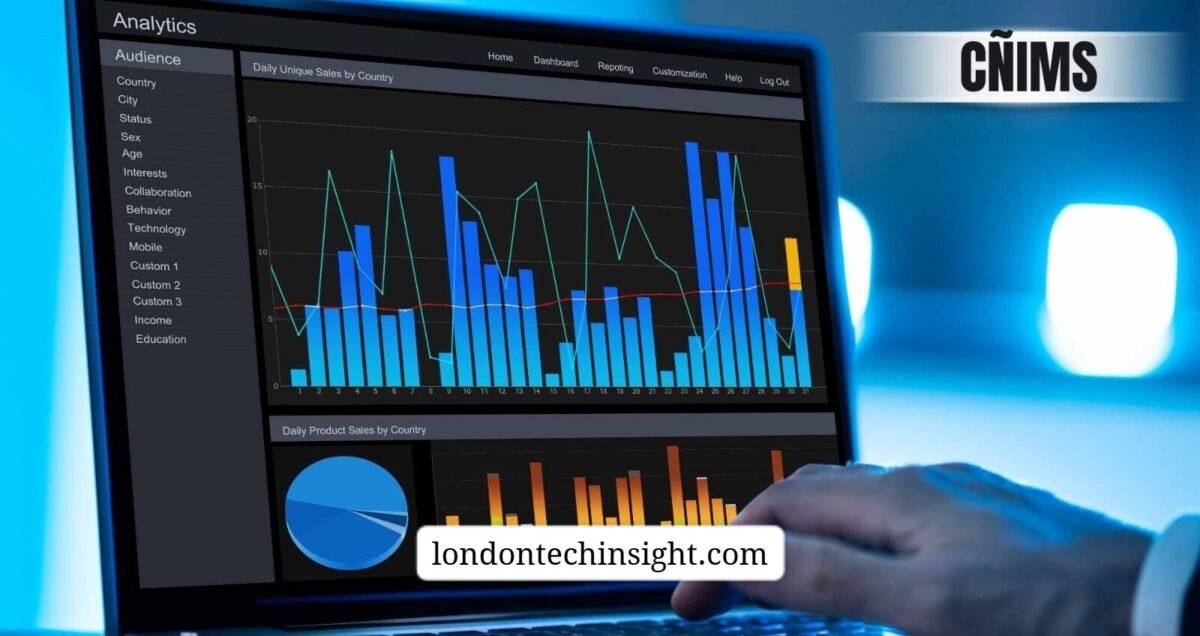Introduction
In the rapidly developed scenario of global technology, new concepts come out how industry, institutes and individuals interact with digital systems. One of the latest words that attract attention, is a concept that mixes intelligence, management and integrated modernization strategies Although the name may look unusual, the essence of cñims is on how it can change operations by combining advanced computing, streamlined data systems and practical applications in various sectors from education and healthcare to corporate administration and digital economy.
A technical structure to understand cñims and a guiding theory for efficiency in the modern world needs to look at both its structural role.By discovering its background, features, benefits, challenges and future implications, we can see why cñims are rapidly considered as a powerful solution for organizations seeking development, stability and competitive benefits in today’s digital reality.
Table of Contents
What is Cñims and Why Does it Matter?
Cenims can be described as a comprehensive information and management system that connects various digital tools, communication networks and knowledge repository to an integrated platform. At its core, it enables decision making makers to rely on accurate data and real -time analytics rather than fragmented or old systems. The importance of Cenims is not only in its technical structure, but in its philosophy of integration, which bridges the gap between raw information and actionable insight.
This overall nature makes it a relevant tool in many industries, simplifying administrative processes in universities to improving efficiency in hospitals or optimizing workflows in multinational companies. In an era where digital changes are no longer alternative, but necessary, Cenims stands out as a structure that ensures that technology acts as an enabler rather than a barrier.

To understand the depth of Cenims, we need to examine its structural elements that run functionality. Unlike traditional systems, which focus on the same role, Cenims integrates several dimensions:
Data management: collecting, organizing and analyzing data in various sources.
Process Automation: Reducing manual workload through intelligent workflows.
Communication Equipment: Ensuring easy interaction between teams and stakeholders.
Analytics and Reporting: Providing insight to make better decisions.
Security Protocol: Protect sensitive information through encryption and monitoring.
These interconnected components create more Cenims than only one software – it becomes a central nervous system for any organization.
Historical Background and Evolution of Cñims
When the emergence of Conims in the early days of digital information management could be returned, the organizations were struggling with fragmented databases and disabled paper-based procedures. Initially, efforts were made to build management systems that could centralize records, but these early versions lacked adaptability and intelligence. With the emergence of cloud computing, Artificial Intelligence and Big Data Analytics, the foundation for Cenims became possible.
Over time, the system evolved from being a simple repository in a smart ecosystem, which was able to predict trends, streamline communication and integrate diverse technologies. Today, Cenims represents the culmination of the progress of decades in computer science and organizational theory, one of the most advanced solutions for digital changes.
How Cñims Works in Practice
To appreciate Cenims, it helps to see how it operates in a real -world environment. Students consider a university implementing Cinims to manage records, faculty coordination and resource allocation. Instead of having separate systems for entry, grading, scheduling and research databases, Cinims integrates all these functions under a platform. The result is an easy experience where administrators can reach the information immediately, students can track their progress, and faculty can effectively cooperate.
Another example is in Healthcare, where hospitals use Cinims to manage patient records, monitor treatment schemes and coordinate with various departments. It reduces errors, saves time, and eventually improves the patient’s care. The capacity of Cenims to function in sectors shows its flexibility and universal relevance.
Key Benefits of Cñims for Organizations
One of the most compelling reasons has a wide range of benefits adopting cinims adopting organizations. These benefits are beyond simple efficiency and make long -term values.
Operations efficiency: Cenims reduces fruitless processes and reduces human error.
Cost Savings: Automation and well -organized workflows give rise to less administrative expenses.
Promoted cooperation: Centralized system teams allow teams to work simultaneously.
Better decision making: Data-operated Insights leads the guide leaders to smart strategies.
Scalability: According to the increasing needs of Cenims organizations.
These benefits show how Cenims is not just a device but a transformative force.
Comparative View: Cñims vs. Traditional Systems
| Feature | Traditional Systems | Cñims Approach |
| Data Handling | Fragmented databases | Integrated, centralized data pool |
| Automation Level | Limited | High with intelligent workflows |
| Decision-Making Support | Manual reports | Real-time analytics and predictions |
| Scalability | Difficult and costly | Flexible and easily expandable |
| Collaboration | Dependent on silos | Cross-functional and seamless |
This comparison highlights why organizations worldwide are gradually shifting toward adopting cñims.
The Challenges of Implementing Cñims

While the capacity of Cenims is huge, adopting it is not without challenges. Organizations often face resistance to change, as employees accustomed to traditional methods can hesitate to optimize. Especially for small institutions, the cost of installation of Cenims can also be a barrier. In addition, concerns about data privacy and cyber security are required to address with strong safety measures. Another major challenge lies in adaptation of Cinims, as each industry and organization have unique requirements that require solutions to suit. Despite these obstacles, many institutions reveal that long -term benefits defeat initial difficulties, making the journey meaningful towards Sinims.
Case Study: University Implementation of Cñims
A leading international university recently adopted cñims to overhaul its outdated administrative system. Within a year, the university reported a 40% reduction in paperwork, a 25% increase in student engagement with online portals, and significant improvement in faculty coordination. Notably, the centralized platform allowed the university to expand its online learning offerings, accommodating thousands of students worldwide. This real-life case illustrates how cñims is not just a theory but a proven solution.
The Future of Cñims in the Digital Age
The next decade promises even more possibilities for Kambs as emerging technologies such as artificial intelligence, machine learning and blockchain converge with their framework. Future Cenims systems can contain future modeling that guides not only current operations, but also predicts market trends, public health risks or educational results. Integration with the Internet of Things (IOT) will expand its scope, enable organizations to connect equipment and data to unprecedented ways. As digital changes become universal, Cenims will probably develop in an essential infrastructure like electricity or internet today.
What Makes Cñims Unique?
Cenims is not just another software or database; It is a holistic solution that defines how information flows in departments or organizations. Its uniqueness lies in three aspects:
Integration of procedures: Instead of working with fragmented systems, Cenims brings everything under a platform.
Intelligent Decision Support: With analytics and real-time data, leaders make better options.
Adaptability: It works in industries – education, healthcare, corporate and even public governance.
This adaptability explains why Cenims are being adopted in various environment, from small startups to large institutions.
Applications of Cñims in Real Life

The value of cñims becomes more visible when applied to specific sectors. In education, it helps schools and universities centralize admissions, grading, and research functions. In healthcare, it ensures accurate patient records, faster billing, and better communication among departments. For businesses, cñims supports resource planning, employee management, and customer engagement. Governments also benefit by using cñims to simplify public services and enhance transparency. The versatility of cñims shows that it is more than a tool—it is a digital strategy for success.
Benefits of Adopting Cñims
The organizations that implement cñims often report dramatic improvements in both efficiency and output. Some key benefits include:
- Reduced duplication of work and paperwork.
- Lower operational costs through automation.
- Faster and more reliable decision-making.
- Stronger collaboration between teams and departments.
- Scalability for future growth.
These advantages explain why cñims is increasingly seen as a long-term investment rather than a temporary upgrade.
The Future of Cñims
As techniques such as artificial intelligence, cloud computing and blockchain mature, cinims will continue to develop. Future versions can predict trends before they occur, helping organizations to estimate challenges rather than reacting to them. With the increasing demand for smart systems, Cenims is likely to become a digital spine for industries worldwide.
Conclusion
Cenims represents a revolutionary approach to digital integration that re -defines how organizations manage information, cooperation and innovation. From education to healthcare and corporate governance, it provides tangible solutions that increase efficiency, saves cost and strengthen the decision makers While there are challenges in adoption, long -term awards are very important to ignore. As technology continues to move, Cenims will be at the forefront of digital modernization, which offer a reliable route for institutions and businesses seeking permanent growth and flexibility.
FAQs
Q1: What does Cenims stand for?
Cenims represents a comprehensive, integrated management system designed for data-operated decision making and efficiency.
Q2: Is Cenims only for big outfits?
No, while large outfits are greatly benefited, small and medium enterprises can also use customized versions of Cinims.
Q3: How does Cenims improve education systems?
It integrates research, examination, faculty records and research in a single platform, simplifies management and improves student experience.
Q4: What are the main risk of cinims?
Primary risks include implementation costs, data privacy concerns and employee resistance to changes.
Q5: Will Cenims develop with new techniques?
Yes, the future versions are expected to integrate AI, IOT and blockchain, making them more intelligent and adaptive.
Also Read This: Unlocking the Best Power of Plftiger Technology Today 2025
